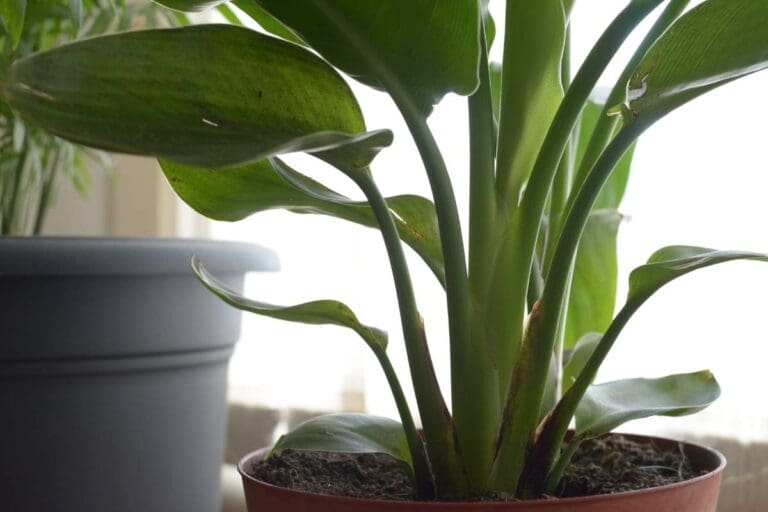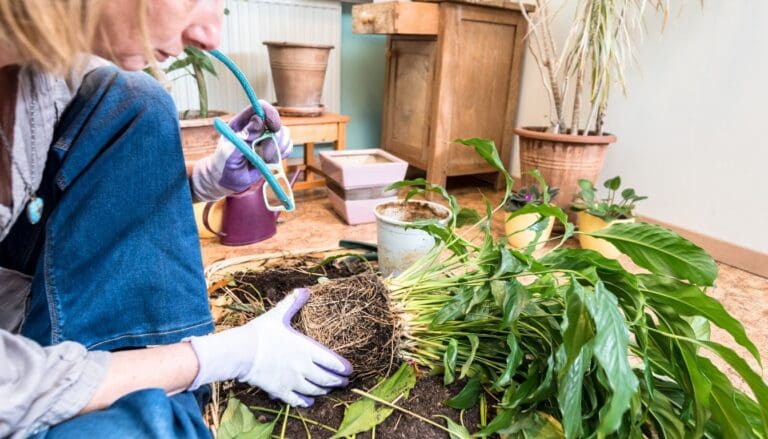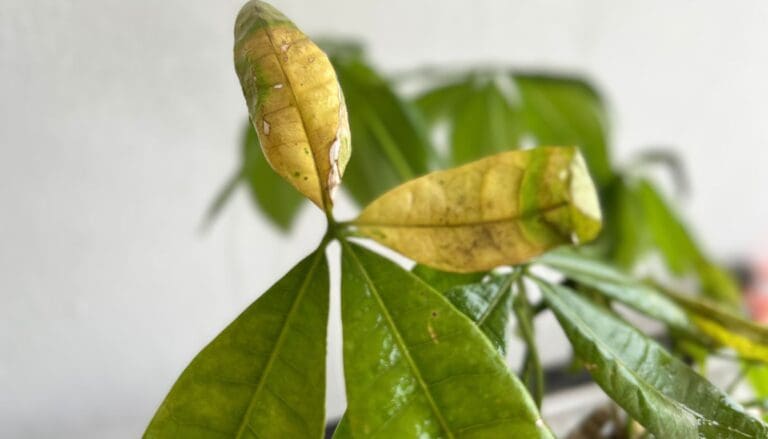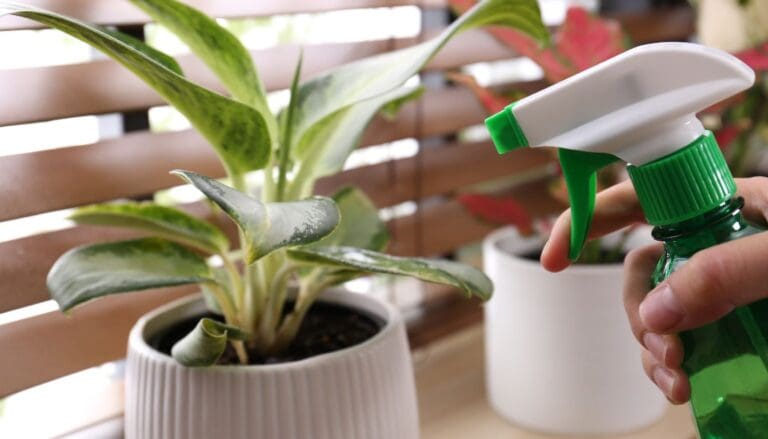What Kind Of Lighting Does A Boston Fern Need?
The growth and development depend on the amount of light it is receiving. If you want your Boston fern to thrive efficiently, you must understand and maintain its proper light requirements.
In general, Boston ferns thrive under bright indirect sunlight. Mild morning sunlight is excellent for these plants, while harsh afternoon sunlight can cause sunburn. Don’t let direct sunlight fall on your Boston fern, and use artificial light if it is not getting enough light.
If you are new to Boston fern and want to know more about its light requirements, this article will be a helpful guide. So keep reading

Please note: Simplify Plants is reader-supported. Some links in the post are affiliate links and I get a commission from purchases made through links in the post.
Importance of good lighting for Boston fern
Plants need light to carry out their daily activities like photosynthesis.
Through photosynthesis, the plant makes food and produces energy to assist themselves.
If you give proper lighting to your Boston ferns, it will help them stay healthy and grow faster.
But if your plant fails to get enough light, it will lead to stunted growth and other health problems.
To keep your Boston fern healthy, you must understand its light requirements to provide it with the correct light.
What kind of light does Boston fern need?
Boston ferns grow in sub-tropical areas where they receive indirect light under the shade of taller trees.
This plant doesn’t get exposed to direct sunlight, and it prefers to grow under filtered or indirect light.
Try to find a location for your Boston fern where it will receive enough indirect sunlight daily.
But if you want to keep the plant outside, you must provide a shade to protect it from direct sunlight.
If you cannot provide natural sunlight to your plant, you can also use artificial lights.
Keep an eye over your plant to see whether it is getting proper light.
If not, then move the plant to a better location.
What are the light requirements of Boston fern?
To provide the correct amount of light to your Boston ferns, you need to understand five things:
- Difference between direct or indirect light
- Understanding the sun exposure and light intensity
- Understanding the direction
- Light duration
- Summer vs. winter light
Difference between direct and indirect light

If you are new to this, you need to understand the difference between direct and indirect light.
Direct sunlight is the most intense sunlight which comes directly from the sun.
This type of light is only suitable for those plants that can tolerate extreme heat.
There are two ways to check the direct sunlight.
Try to check whether the light has a sharp and clear shadow.
If yes, then the light is direct.
You can also check the light intensity with your hand.
Bring your hand near the light and wait for a few seconds.
If you feel intense heat in your hand, it is direct sunlight.
On the other hand, indirect sunlight is filtered sunlight.
This light does not hit the plant directly from the sun because of the filter, and it has a lower intensity than the direct sunlight.
When your Boston fern is placed near a window covered with a shade like curtains or blinds, the plant receives indirect sunlight.
Almost every tropical plant, including the Boston fern, prefers indirect sunlight to match its natural habitat.
Understanding the sun exposure and light intensity

Boston fern cannot tolerate direct sun exposure, and even a little exposure to direct sunlight can lead to sunburn in your plant.
Boston fern requires bright indirect sunlight to thrive, so keep your plant in an area where the plant will get filtered light.
The light intensity for this plant should range between 10,000 and 12,000 lux.
So, try to maintain that.
If you want to determine the exact light intensity, you can measure it using a light meter.
This will help you know the light intensity in any location, and then you can choose the spot accordingly.
Understanding the direction
When choosing an ideal spot for your Boston fern, you should find a location where the plant will get enough indirect sunlight.
You can keep your plant near an east-facing window because the plant will receive soft morning sunlight in this area.
You can also keep your Boston fern near a north-facing window because the light intensity in this area is low, which is suitable for most shade-loving houseplants.
On the other hand, south and west-facing windows have the strongest light intensity, and it is only suitable for plants that can tolerate extreme heat.
So it is best not to keep your Boston fern in those areas.
Even if you keep it, make sure you provide a shade to your plant by using window films or curtains.
Light duration

Boston fern is quite different from other houseplants because it needs only a few hours of light.
This plant requires 2-3 hours of indirect sunlight daily to thrive well.
If the light intensity is low, you can also provide some extra hours of sunlight.
But when you are using artificial light, you can give Boston fern 4-6 hours of light per day.
Remember to switch off the artificial light after the plant receives sufficient light.
Summer vs. winter light
Light requirements of the plants change with the seasonal changes.
During summer, the light intensity remains at its peak while reducing during the winter season.
In summer, you must keep your Boston fern in a place where it will get filtered sunlight.
And also, keep the plant 5-7 feet away from the window to prevent any heat stress.
During summer, don’t ever keep your Boston fern near a west or south-facing window, even after providing shade.
Heat can cause extreme stress to your plant even when the light is indirect.
In winter, you can provide 1 hour of direct sunlight to your Boston fern if the intensity is pretty low.
You can also use artificial light during winter if the natural light is not enough for your plant.
Boston fern is getting too much light

As the Boston fern is a tropical plant, it is sensitive to direct sunlight.
If you keep your plant in a location where it is receiving intense or direct sunlight, the plant will get sunburns.
If your Boston fern is getting direct sunlight, then you will get to see various signs of damage, such as:
- Scorched leaves
- Dry and compact soil
- Brown spots or edges on the leaves
- Crispy leaves
- Dehydrated plant
- Stunted growth
If you notice all these signs in your Boston fern, your plant is getting excessive sunlight.
But, don’t get tensed as you can easily save your plant from sunburn.
What to do if Boston fern is getting too much light?
To save your plant from excessive sunlight, you should follow the given steps.
- Place your Boston fern in a location with indirect or filtered light.
- Remove all the damaged and faded leaves by using sterilized pruners or scissors.
- Take out the entire plant from the pot and place it in a container filled with water. This will help the soil get enough moisture and recover from dehydration.
- Provide humidity to your Boston fern by misting. This will help your plant to cool down from extreme heat.
- Don’t fertilize your plant until it recovers completely.
- To prevent the plant from future sunburn, always keep your Boston fern away from direct sunlight or provide shade.
Boston fern is not getting enough light

Not even a single plant can survive without light, so if your Boston fern fails to get sufficient light, it will develop health problems.
This plant can tolerate low light problems only for a certain limit.
If Boston fern stays in low light for a prolonged period, you will see various signs.
- Discolored or yellow leaves
- Leggy growth
- Slow growth
- Smaller leaves
- Damp soil
- Pest infestations
- Root rot
If you see any of the signs in your Boston fern, then try to find out whether your plant is receiving proper light or not.
If not, you need to take steps to fix this problem.
What to do if Boston fern is not getting enough light?
To solve the low light problems, you must follow the below steps.
- Use artificial lights if you fail to provide natural light to your Boston fern.
- Reduce watering if your plant is placed in a low light area; otherwise, it can undergo overwatering, pests problems, and root rot disease.
- You must clean the leaves of Boston fern to remove the dust particles. It will help the plant to absorb proper sunlight for performing photosynthesis.
- Keep rotating your plant regularly so that all the corners will receive equal light.
- Relocate the Boston fern to a brighter spot where they will receive enough light. Make sure the light is indirect.
How to provide sufficient light to your Boston fern?
Follow the steps to provide sufficient light to your plant.
- Place your Boston fern near an east or north-facing window as it contains the lowest light intensity.
- While keeping the plant near a window, ensure you provide a shade to keep the plant away from sunburn. You can either use curtains or windows films to filter the light.
- If there is no filter available, you should keep your Boston plant 5-7 feet away from the window.
- Always choose a shady spot if you want to keep your Boston fern outside.
- If you are using artificial light, then always set a timer to make sure your plant gets a sufficient amount of sunlight.
- As soon as you notice any signs of sunburn or low light, take action immediately to cure this problem.
Final words
Boston fern is a tropical houseplant that thrives in bright indirect sunlight. Without proper lighting, Boston fern can develop various health issues.
Exposing the plant to too much light can cause dehydration, while low light can stunt its growth. Place the plant where the light is neither too extreme nor too low.
Keep an eye over your plant to see whether it is facing any problems. If yes, don’t waste time and try to treat the plant as soon as possible.
Reference: University of Florida, The University of Arkansas Division, Texas A&M University System, The University of Georgia, University of New Hampshire, Wikipedia, The Royal Horticultural Society.
Recommended Garden Supplies
| Product Image | Our Recommended Gardening Supplies | Check Offers! |
|---|---|---|
Top Top
Top
Top
Top
Top
Top
Top
Top | rePotme Houseplant and Tropical Classic Potting Soil Mix | Check Offer On Amazon |
 Top
Top
Top
Top
Top
Top
Top
Top | Espoma Organic Indoor Plant Food | Check Offer On Amazon |
 Top
Top
Top
Top
Top
Top
Top
Top | GooingTop LED Grow Light 6000K Full Spectrum Clip Plant Growing Lamp | Check Offer On Amazon |
 Top
Top
Top
Top
Top
Top
Top
Top | Soil Moisture Meter | Check Offer On Amazon |
 Top
Top
Top
Top
Top
Top
Top
Top | Govee Hygrometer Thermometer, Bluetooth Enabled! | Check Offer On Amazon |
 Top
Top | LEVOIT Humidifiers for Large Room(Best For Plants) | Check Offer On Amazon |
 Top
Top
Top
Top
Top
Top
Top
Top | Upgraded DIY Automatic Drip Irrigation Kit, 15 Potted Houseplants Support | Check Offer On Amazon |
 Top
Top
Top
Top
Top
Top
Top
Top | Stainless Steel Heavy Duty Gardening Tool Set | Check Offer On Amazon |
 Top
Top
Top
Top
Top
Top
Top
Top | Bonide Insecticidal Soap | Check Offer On Amazon |
 Top
Top
Top
Top
Top
Top
Top
Top | Bonide 32 oz Spray Neem Oil for Organic Gardening | Check Offer On Amazon |
 Top
Top
Top
Top
Top
Top
Top
Top | Garden Safe Fungicide | Check Offer On Amazon |






